Money divides Latin Americans from Asians after crossing Darien
With fewer resources, migrants from nearby countries stay in more precarious shelters and struggle to continue their journey
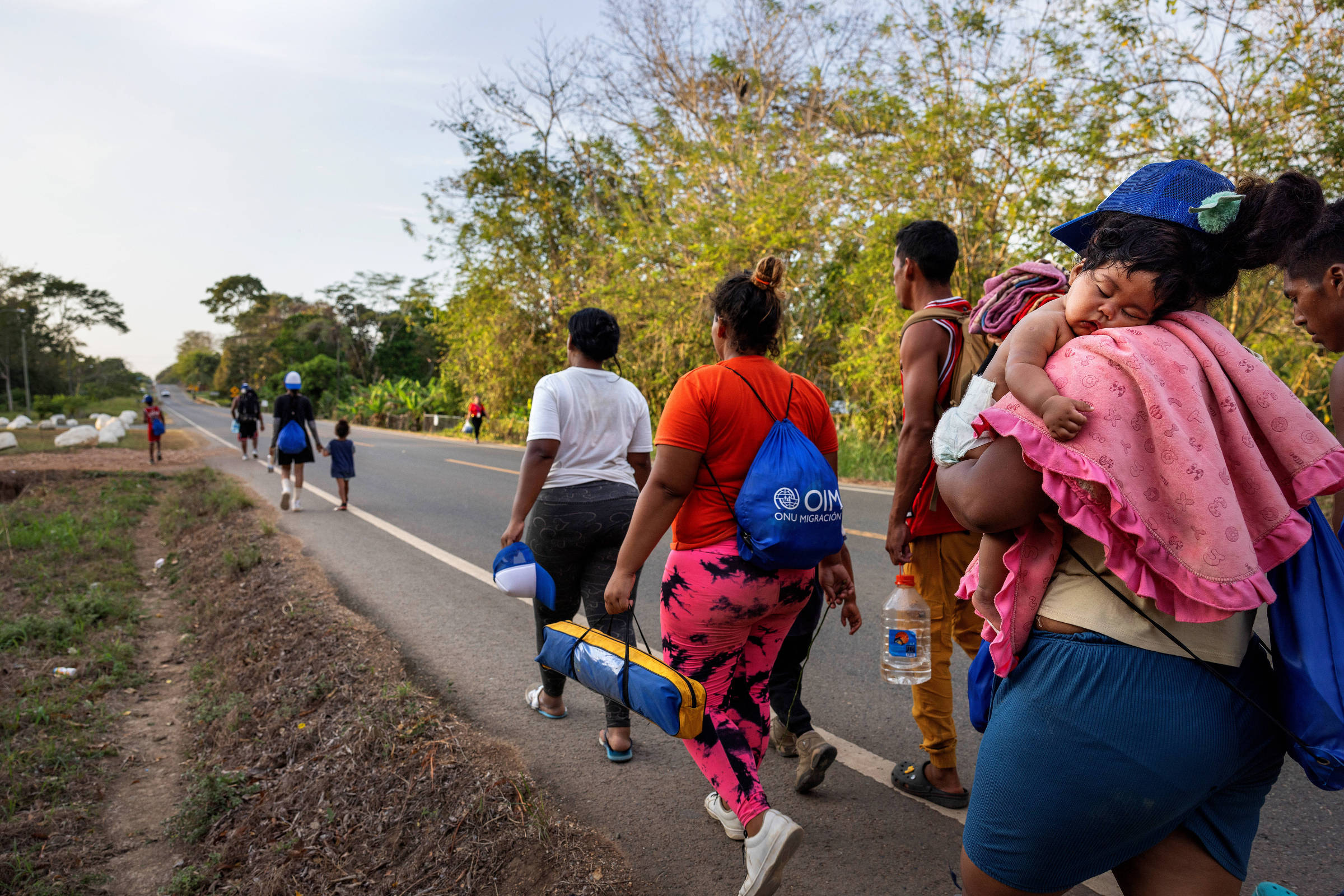
With fewer resources, migrants from nearby countries stay in more precarious shelters and struggle to continue their journey
Friday afternoon began in the far east of Panama, at the height of the dry season, as 28-year-old Venezuelan Naibe prepared for another walk that would take her at least five hours ahead.
The goal was to leave the Lajas Blancas Immigration Reception Station, one of those that shelters newly arrived immigrants from the Darien jungle, in search of a Western Union unit to withdraw money. She didn’t have a penny in her pocket.
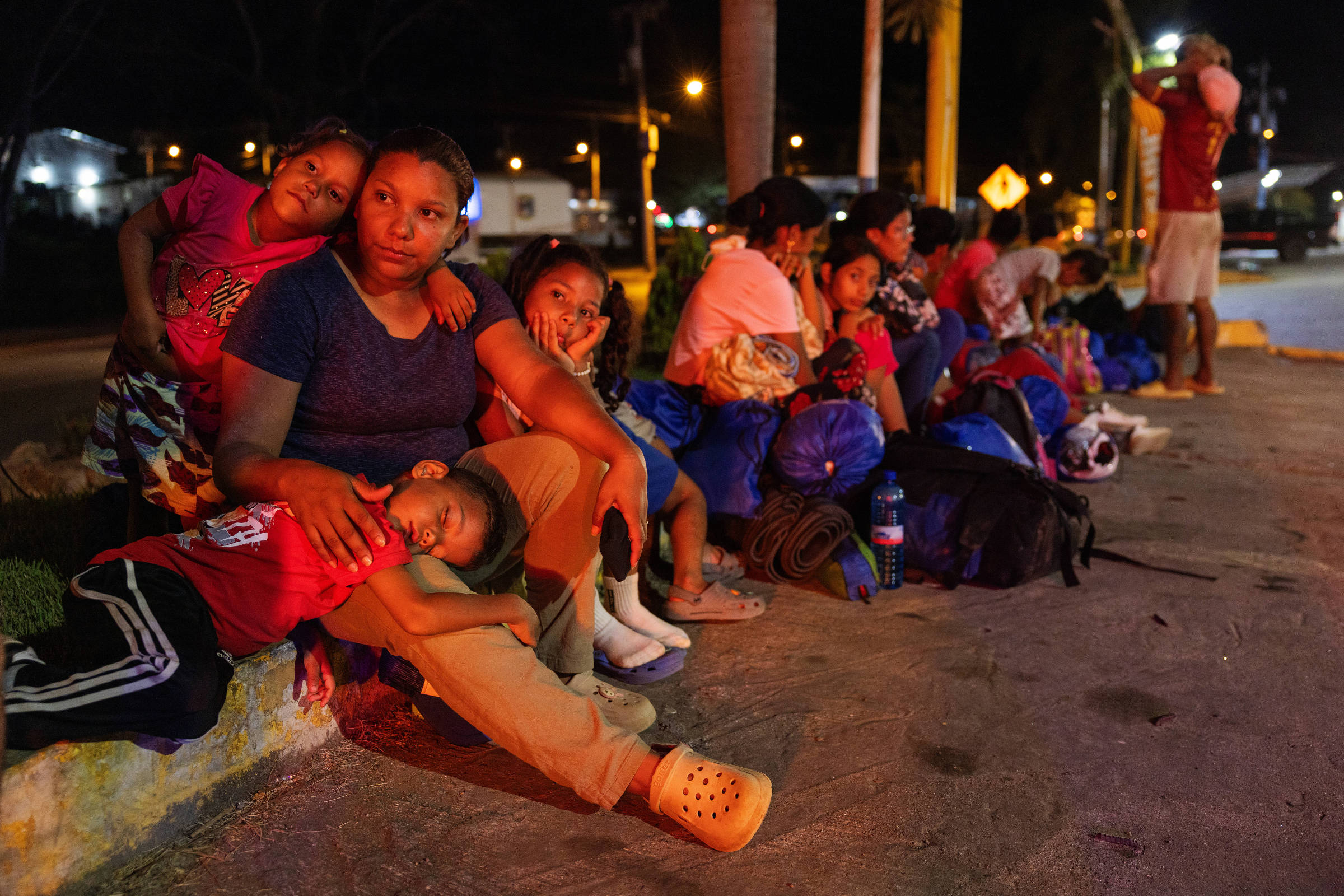
The Venezuelan Naibe, 28, with her children, in front of a shopping center in the city of Metetí, on the banks of the Pan-American Highway - Lalo de Almeida/Folhapress
“I worked for a year in Medellín [Colombia] saving money for this crossing, but some indigenous people came out of the jungle and robbed us. They even raped [a migrant]. A Haitian, who was in the group, tried to intervene, but they slashed his throat with a knife.”
A single mother, Naibe found herself with her four children, the 4-year-old twins, and two girls aged 9 and 8, with no way to pay for the only option given to migrants to leave Lajas Blancas: a bus that costs $40 (R$ 200) per person to Costa Rica.
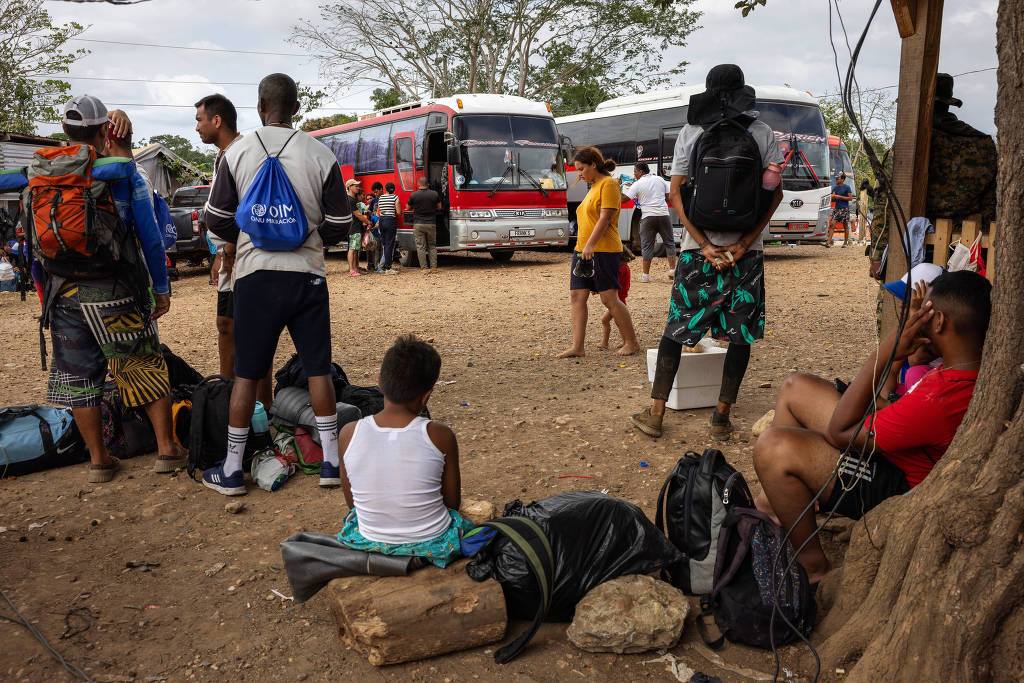
Immigrants wait at the Lajas Blancas Migratory Reception Station alongside buses that take them to Costa Rica - Lalo de Almeida/Folhapress
Many migrants from Lajas Blancas managed to get dollars through an illegal scheme that charged a 15% fee on the withdrawn amount, but the police dismantled it. Thus, the search for money now included going to Metetí, nearly 25 km away. That’s what Naibe and hundreds of others did that day.
She walked slowly, exhausted by the strong sun. Two of her children had a high fever. Waving to the cars passing by on the Pan-American Highway would be in vain: transporting unauthorized immigrants in Panama is a crime.
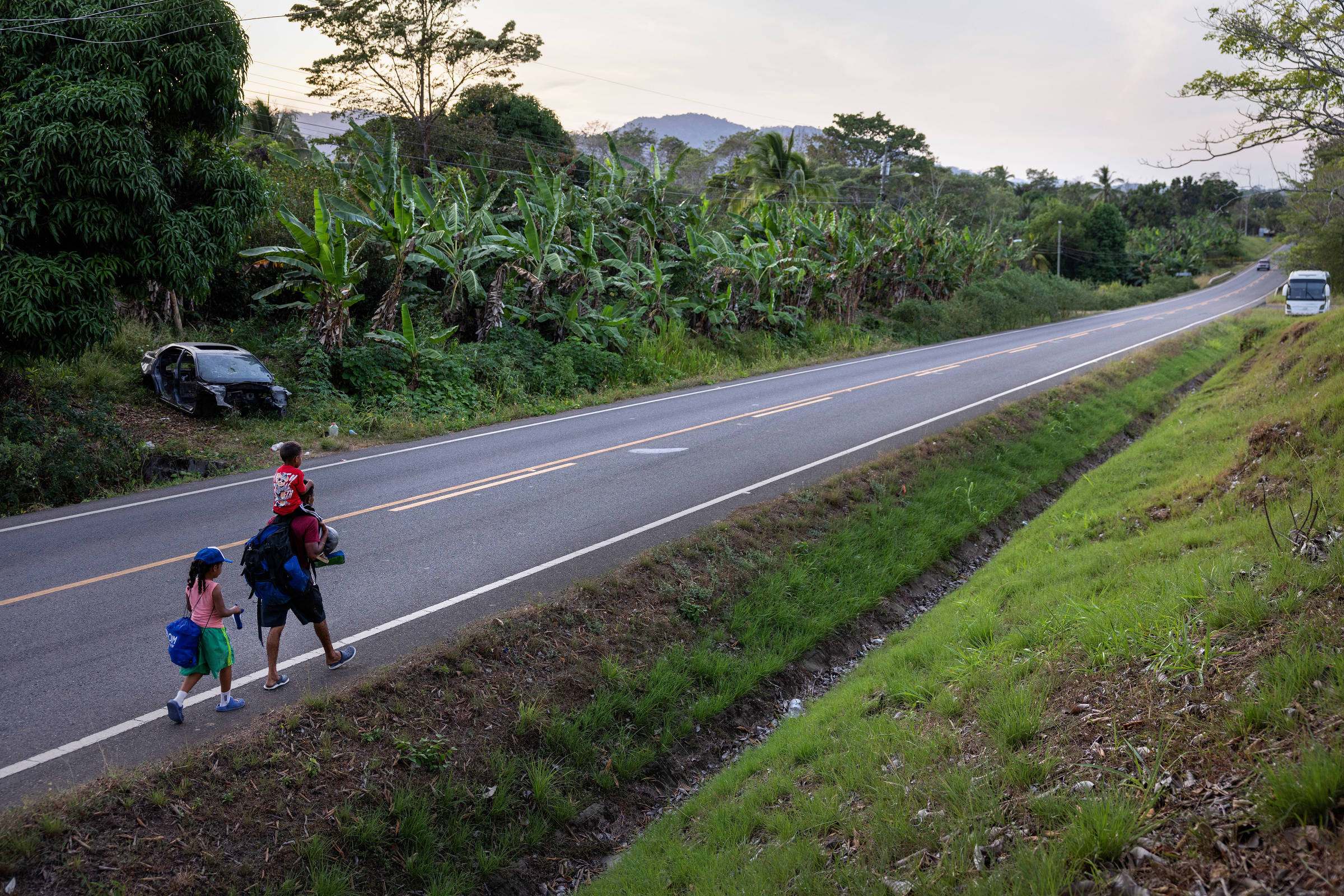
A Venezuelan family walks along the Pan-American Highway, in the easternmost part of Panama - Lalo de Almeida/Folhapress
When she finally reached Metetí, the Venezuelan joined other travelers who were circulating in the local commerce. They soon realized that finding work or money there would be almost impossible. There was also no Western Union agency.
The lack of resources leads most migrants from Latin America to stay in Lajas Blancas for weeks, which concentrates groups from the region. The shelter has an average capacity to accommodate 500 people, but since 2023, there hasn’t been a single day when there were less than 1,500 - it even reached 3,000 during peak times.
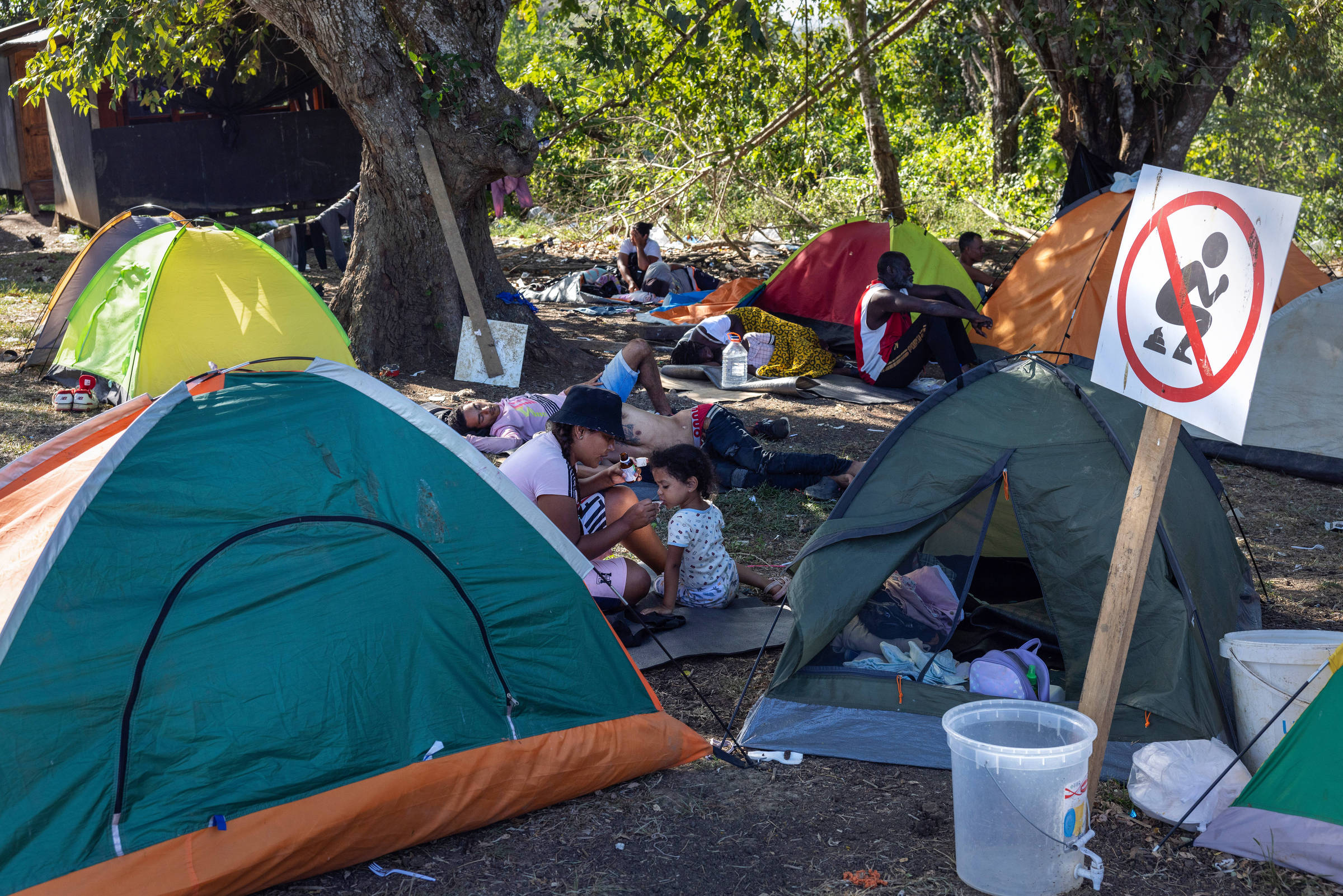
Sheltered at the Lajas Blancas Migratory Reception Station - Lalo de Almeida/Folhapress
The wooden constructions built with funds from the UN long ago cannot accommodate the sheltered people, who spread out in tents on the dirt floor. There are even signs asking them not to relieve themselves there. Aggravated by the heat, the bad smell permeates the air.
An obstacle for the government to make improvements is the fact that the land does not belong to the state, but to Olvenis González, 43, “the owner of Lajas”.
In one of the two only masonry spaces in the station, a large blue house selling drinks and meals, he works with his family. Sitting on a wooden crate next to crates of water and Coca-Cola, he tells that in 2018 he gave the land to the government “in exchange for being able to profit from commerce.” For humanitarian organizations’ employees, there is a “lack of willingness” to make the place more organized.
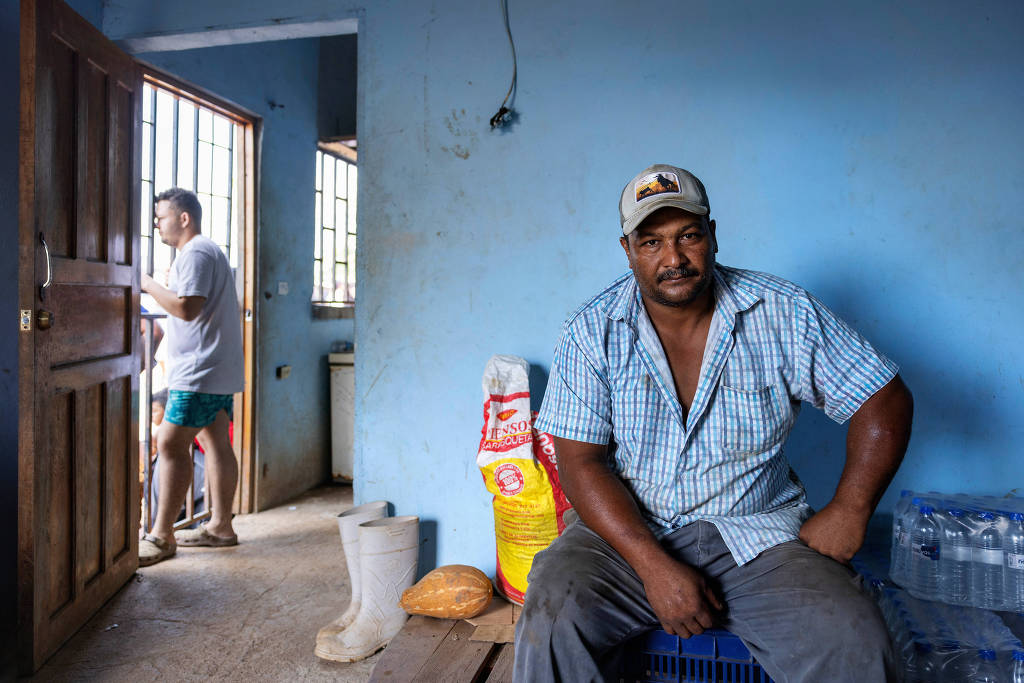
Panamanian Olvenis González, 43, owner of the land where the Lajas Blancas station is located - Lalo de Almeida/Folhapress
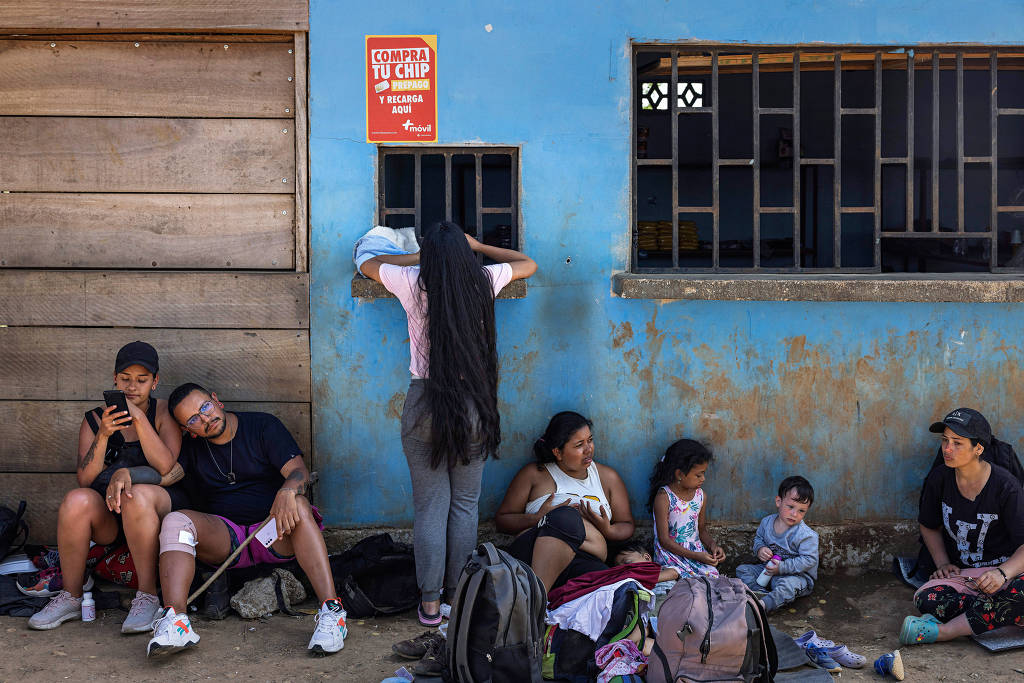
Sheltered next to Olvenis’ business at the migratory station - Lalo de Almeida/Folhapress
The scene is quite different 32 km away, at the San Vicente Immigration Reception Station, which receives more Asians and Africans. With more dollars in hand, Chinese and Afghans have the conditions to cross the jungle through the shortest route, and San Vicente is precisely the closest shelter.
There, the structures are made of metal, and there are bunk beds for almost everyone –on average, 250 people are accommodated. Asians usually head to Costa Rica on the same day or the day after crossing Darien.
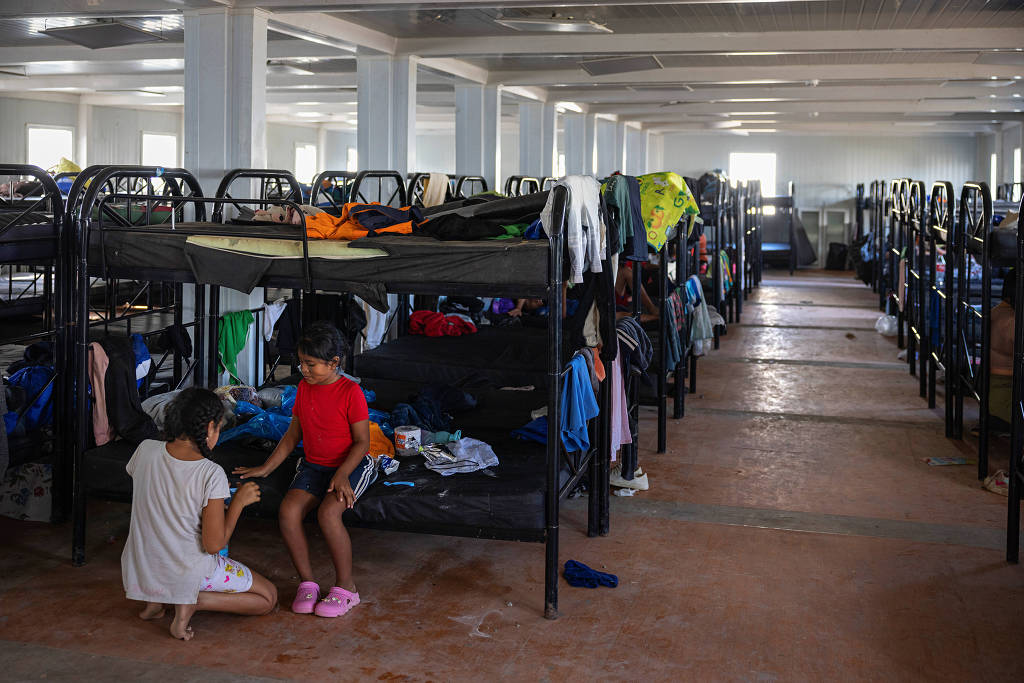
Children play inside a shelter at the San Vicente Migratory Reception Station - Lalo de Almeida/Folhapress
Still in Colombia, the journey makes no differentiations. Before crossing the Gulf of Urabá, everyone needs to pay for the boat transportation (usually $175, or R$ 875), plus about $80 (R$ 400) as a kind of toll to the Gulf Clan, the cartel that dominates the region.
To prove that the amount was paid, group members stick a sticker on their identity documents - when our reporters were in the region, the current sticker was the Levante shield, the football club from Valencia, Spain.
With the jungle ahead, those extra dollars matter. Those who choose the shortest route have to pay $700 (R$ 3,500). Most take the longer trail, for half the price. Coyotes accompany migrants until the end of the Colombian side of the forest. Upon seeing the Panamanian flag, signaling the border, travelers are left at the mercy of numerous indigenous gangs that operate on the Panamanian side.
Those who manage to cross Darien through the longest route, mostly Latinos, will arrive at the indigenous community of Bajo Chiquito and from there, they will go to the Lajas Blancas station. Along the shorter route, they arrive at Puerto Limón, and the destination will be San Vicente.
On the first route, migrants usually take 3 to 5 days, on average, depending on physical conditions and whether they are with children or elderly. On the “shortcut,” the time varies from 2 to 3 days.
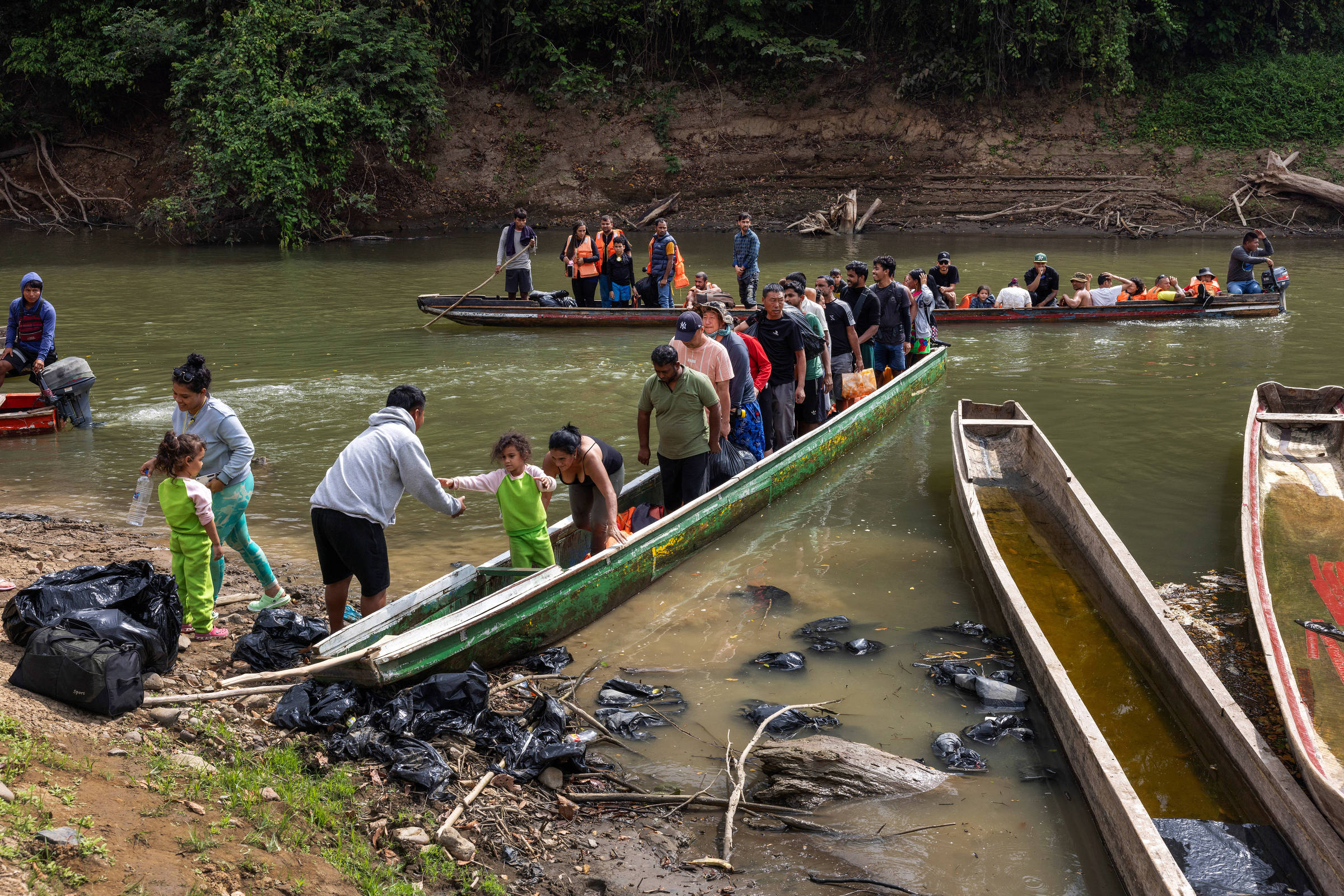
Canoes transporting immigrants arrive at Puerto Limón, near Metetí - Lalo de Almeida/Folhapress
Puerto Limón has become the symbol of Asian migration from Darien. This former terminal, which once only served to connect indigenous communities to cities and distribute banana and avocado production, began to receive thousands of Chinese and Afghans and a few Venezuelans.
Local commerce reflects this: on the dirt road that gives access to the disembarkation of piraguas (canoes) on the Chucunaque River, there are at least three stores with signs in Mandarin saying, “Chinese friend, I am here and can help.” They sell instant noodles and sodas and offer space for migrants to charge their cell phones.
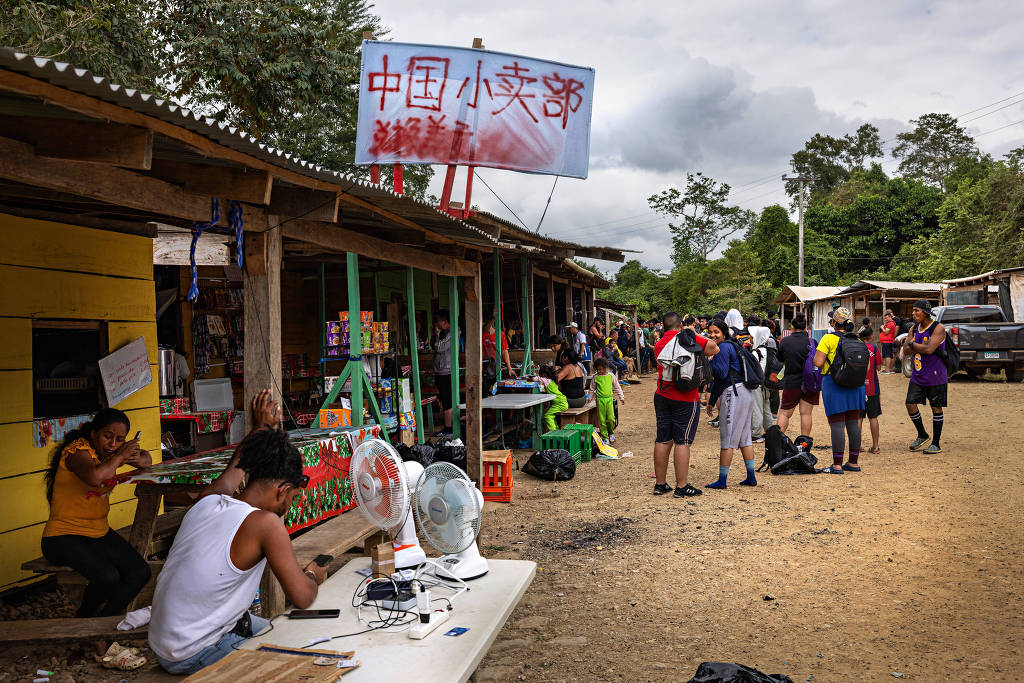
Commerce in Puerto Limón displays a sign in Mandarin indicating that there is a Chinese grocery store there - Lalo de Almeida/Folhapress
A merchant who introduces himself as Alberto, originally from Canton, has been in Panama for 42 years. The Central American country was the destination for his family “at a time when it was impossible to survive in China.” Faced with the wave of compatriots arriving through Darien, Alberto opened his little shop in Puerto Limón six months ago. “Most of those who arrive here come from Fujian,” he says, referring to a coastal province of China.
Last year, 25,500 Chinese crossed the Panamanian jungle, more than ten times the number registered in 2022. Despite this unprecedented flow, it is very difficult to find them stuck in this stretch of their route towards the USA. They continue their journey faster.
Meanwhile, nineteen days after speaking to the reporter in Panama, Naibe, the Venezuelan who opens this article, awaited with her children in a migrant center in Guatemala.

Chinese board a truck in Puerto Limón to be taken to the San Vicente Immigration Reception Station - Lalo de Almeida/Folhapress
During this time, she managed to borrow money from other migrants she met in Panama and leave the country. In Costa Rica the local government took her to Nicaragua, where she withdrew the little, she had left from the bank and sold candies on the street to continue to Honduras - where she did the same.
Naibe’s journey was far from over. “They don’t let us sell anything here [in Guatemala]. It seems like we bother everyone. I don’t know how we will move forward.”
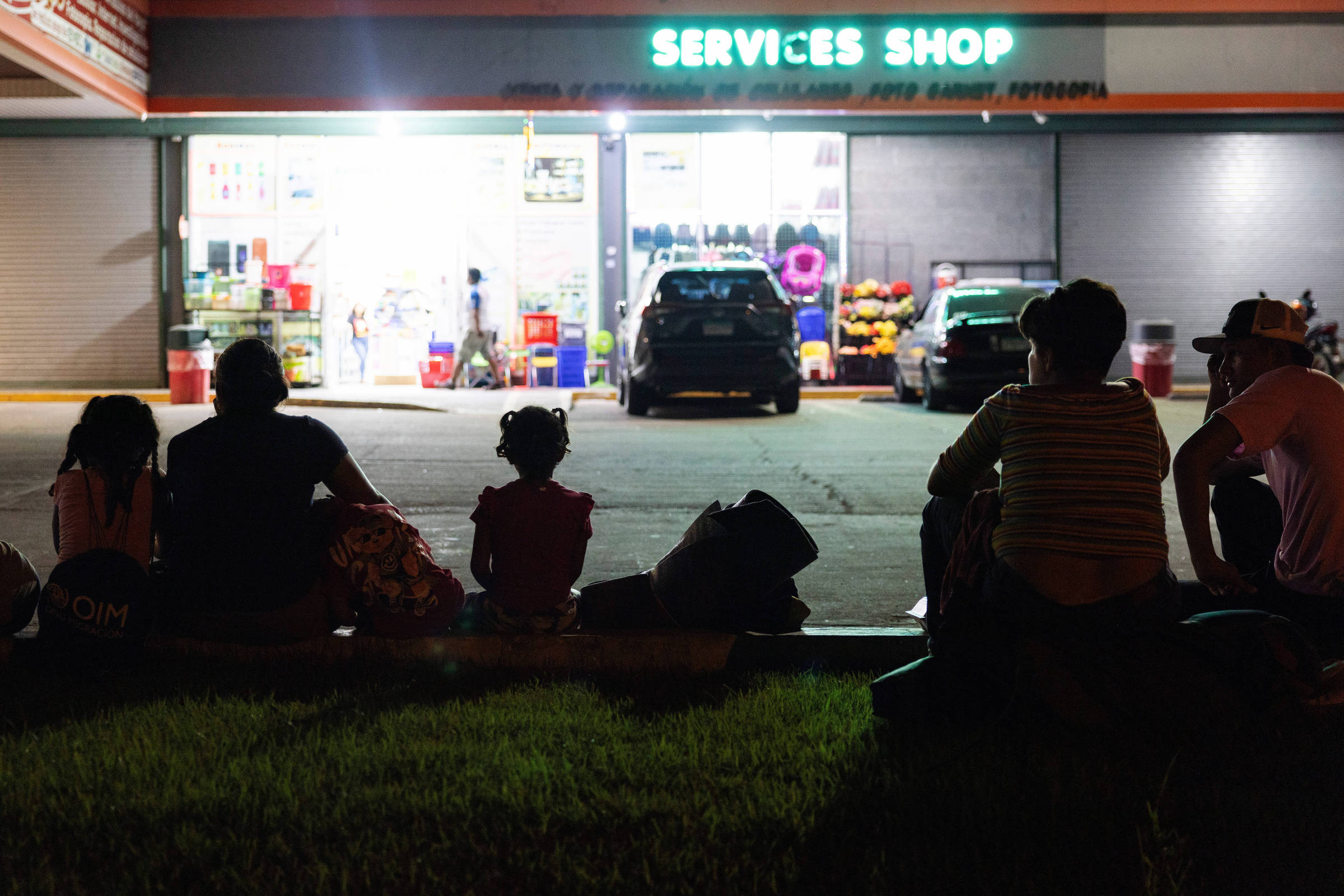
The Venezuelan Naibe, 28, with her children, in front of a shopping center in the city of Metetí, on the banks of the Pan-American Highway - Lalo de Almeida/Folhapress